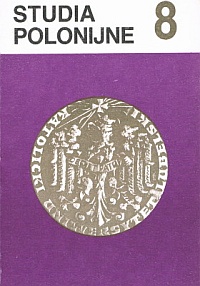Współżycie społeczne polskich i ukraińskich wychodźców w Kanadzie (1896-1939)
Main Article Content
Abstrakt
The aim of the article is to present the complexity of the process of ruthenization of the Polish emigrants in Canada. The analysis of the problem has been conducted in the historical- -sociological perspective. The starting point for the analysis is the conviction that from the very beginning both Ukrainian and Polish population took part in the exodus from the Polish territories (especially from East Małopolska), and then from the reborn Poland to Canada. The Ukrainians were more numerous. These facts as well as founding settlements in Canada in common colonies or in close neighbourhood favoured the assimilation of the Polish and Ukrainian emigrants. An analysis of the data has led to the conclusion that of these two cultures the Ukrainian culture and community proved to be stronger. As a result of the coexistence of the two communities, a process of assimilation of Polish emigrants to the culture of Ukrainian emigrants took place. The assimilation comprised two spheres; language and customs.
Another conclusion from the analysis is that the assimilation process followed a different course in different generations and depended on the time of emigration.
The coexistence of Polish and Ukrainian emigrants who arrived and settled in Canada before World War I was peaceable and was a continuation of patterns from the native country. World War I and the war of 1919-1920 brought significant and unfavourable changes of this pattern. The antagonism which arose in Małopolska between the two nations was transferred to Canada. It had a restraining effect on the assimilation process. The fact that a new wave of emigration from Poland arrived and settled in Canada had a similar effect. The newly arrived Polish emigrants proved to be less open the assimilating influence of the Ukrainian culture and community.
In describing the assimilation process it is important to differentiate between the generations of those who left the native country, i.e. the father generation, and the generation of those who were bom and brought up in Canada, i.e. the son generation.
In the father generation the ruthenization process, if it took place, was brought about in the above mentioned spheres of language and customs. Paradoxically, it was accompanied by a lasting sense of Polish national identity, expressed in declarations like „I am Polish”.
A complete assimilation, including a loss of the sense of Polish national identity, if brought about, concerned only the son generation. The statement that in those cases of complete ruthenization of Polish emigrants’ descendants the assimilation to the Ukrainian emigrants’ culture constituted a transitional stage in the assimilation to a global society, remains hypothetical.
The analysis has shown, that religion was the sphere, which was not included in the ruthenization process. The catholic faith proved, both in the father and son generations, to be the most lasting and imperishable inheritance from the forefathers. This is the most important conclusion from the analysis of the complex process of ruthenization of Polish immigrants to the culture and community of Ukrainian emigrants.

